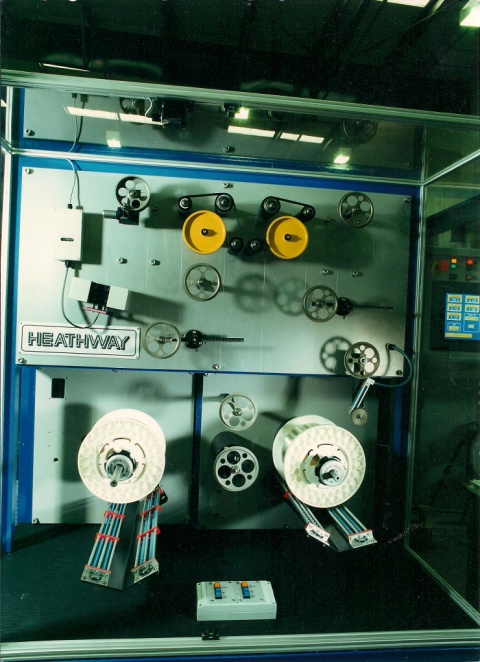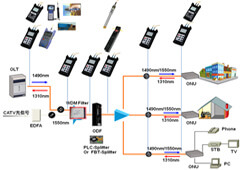Exploring how robotic vision influences advanced production techniques and quality control
Exploring the Influence of Robotic Vision on Modern Manufacturing Techniques and Quality Control
Robotic vision innovation is transforming the landscape of contemporary production and quality assurance. By integrating advanced imaging systems and expert system, manufacturers can accomplish extraordinary levels of accuracy and efficiency. This shift not just optimizes manufacturing procedures yet also addresses critical difficulties in preserving product criteria. As markets increasingly count on these advancements, the effects for future manufacturing methods continue to be to be fully discovered. What will this mean for the competitive dynamics of the market?
Understanding Robotic Vision Innovation
Robotic vision innovation works as the foundation of automation in modern production. It incorporates making use of electronic cameras, sensing units, and expert system to allow robots to analyze and reply to visual details from their setting. This technology enables robots to recognize, locate, and assess items, making them qualified of carrying out complicated tasks such as assembly, evaluation, and material handling with accuracy. The assimilation of artificial intelligence algorithms even more improves the capacity of robotic vision systems, enabling them to adapt to varying problems and enhance gradually. By processing photos and information in real-time, robotic vision systems can promote much faster decision-making and lower mistakes in producing procedures (optical measurement system). This innovation not just improves functional effectiveness however additionally guarantees that quality standards are met continually. As the manufacturing landscape remains to advance, understanding the details of robot vision innovation ends up being vital for leveraging its possible completely
Advantages of Robotic Vision in Manufacturing
Robotic vision modern technology offers significant advantages in manufacturing by enhancing accuracy and precision in tasks such as quality assurance and assembly. This raised level of detail guarantees that items satisfy stringent standards, lowering waste and remodel. In addition, the combination of robot vision can result in raised manufacturing effectiveness, allowing manufacturers to maximize their procedures and attain higher outcome rates.
Boosted Precision and Accuracy
In modern-day manufacturing, boosted precision and accuracy are critical for enhancing manufacturing processes and guaranteeing product top quality. Robotic vision systems allow equipments to do complex jobs with exceptional uniformity. These systems utilize sophisticated imaging modern technologies to identify minute information and variations in materials, parts, and finished items. By examining visual information in real-time, robot vision considerably minimizes human mistake, resulting in less issues and better criteria. Additionally, enhanced precision in measurements and positioning facilitates better positioning in setting up procedures, which is vital for detailed layouts. Ultimately, the integration of robotic vision not just strengthens the dependability of making outputs however additionally cultivates self-confidence among customers pertaining to item integrity and performance. This accuracy is essential in industries where quality is critical.
Boosted Production Performance

Suppliers are progressively turning to vision systems to boost manufacturing effectiveness throughout different procedures. These sophisticated systems allow real-time evaluation and monitoring, significantly decreasing downtime triggered by errors or problems. By incorporating robot vision, firms can automate quality assurance, enabling faster identification of problems and minimizing the requirement for human treatment. This results in streamlined process, as robots can quickly adjust to modifications in production needs without giving up precision. In addition, vision systems help with better supply management by properly tracking elements and products, making sure perfect resource usage. Inevitably, the fostering of robotic vision not only boosts effectiveness but also adds to higher result rates, minimized functional costs, and boosted overall performance in the production industry.
Enhancing Top Quality Control Processes
Robotic vision technology substantially enhances quality assurance procedures in production by employing precision examination strategies. These sophisticated systems promote real-time problem discovery, ensuring that items fulfill strict top quality criteria. Therefore, producers can lessen waste and improve general performance.
Precision Assessment Techniques
Precision evaluation methods have changed quality assurance processes in manufacturing, enabling the discovery of minute issues that typical approaches might forget. These strategies utilize progressed imaging modern technologies, such as high-resolution electronic cameras and laser scanning, to attain exceptional accuracy. By using robot vision systems, makers can automate assessment jobs, making certain consistent performance and lowering human mistake. The assimilation of equipment knowing algorithms additionally enhances these systems, allowing them to adjust and improve in time. On top of that, accuracy inspection assists in the recognition of subtle variants in product dimensions and surface area coatings, which can substantially affect total product high quality. Because of this, producers can apply rehabilitative activities more promptly, inevitably resulting in lowered waste and boosted customer satisfaction.
Real-Time Issue Detection
Using advanced imaging innovations, real-time defect discovery changes high quality control processes in production. By integrating high-resolution cameras and innovative algorithms, makers can swiftly identify anomalies throughout production. This modern technology facilitates instant rehabilitative activities, lowering waste and improving general performance. Real-time systems examine items as they relocate along the production line, ensuring that flaws are detected and addressed immediately manufacturing schedules. Additionally, the execution of device understanding enhances the precision of these systems, permitting them to adapt to brand-new flaw patterns in time. As a result, makers gain from boosted product top quality and reduced operational expenses. Eventually, real-time problem discovery not just improves processes yet also promotes a culture of constant enhancement in modern manufacturing atmospheres.
Real-Time Information Analysis and Choice Making
In the dynamic landscape of manufacturing, real-time information evaluation encourages systems to make swift, notified choices. By leveraging innovative robot vision modern technologies, suppliers can collect and process large amounts of information immediately. These systems evaluate visual inputs to keep track of production procedures, making certain that any type of inconsistencies from high quality criteria are detected and addressed promptly. Manufacturers over here can maximize operations by reallocating sources and changing workflows based on real-time understandings.
The assimilation of data analytics permits for predictive maintenance, where possible devices failures are anticipated before they interfere with production. This positive technique reduces downtime and boosts overall effectiveness. optical measurement system. The capacity to make data-driven decisions in actual time considerably minimizes waste and enhances item high quality, permitting manufacturers to react to market needs quickly. Therefore, real-time information analysis not only simplifies manufacturing however likewise fosters a culture of continual renovation in modern manufacturing atmospheres
Difficulties in Executing Robotic Vision Solutions
Implementing robot vision systems in making provides a variety of difficulties that can prevent their effectiveness. One considerable barrier is the complexity of integrating these systems with existing equipment and workflows. Makers frequently face compatibility issues with tradition tools, leading to enhanced costs and downtime. Furthermore, the irregularity in product forms, dimensions, and products can make complex the calibration of vision systems, demanding comprehensive training and fine-tuning.
An additional challenge hinges on refining large volumes of aesthetic data in actual time. High-performance computing resources are essential, which might call for further financial investment in facilities. There is a shortage of experienced employees qualified of managing and keeping these sophisticated systems, leading to potential functional inefficiencies. Finally, guaranteeing the reliability and precision of robotic vision systems under differing environmental problems positions a continual obstacle. Addressing these concerns is important for taking full advantage of the prospective benefits of robot vision in manufacturing.
Future Fads in Robotic Vision for Production
As improvements in expert system and artificial intelligence remain to evolve, the future of robot vision in production appears significantly encouraging. Arising patterns suggest a change towards extra sophisticated imaging modern technologies, such as 3D vision systems and hyperspectral imaging, which will certainly improve precision in high quality control procedures. Integration with the Web of Points (IoT) will certainly allow real-time information evaluation, permitting robot systems to adapt quickly to modifications in the manufacturing environment. Additionally, the growth of collaborative robotics (cobots) furnished with innovative vision capabilities is expected to promote smooth human-robot interactions, improving efficiency and safety on the manufacturing facility floor. Additionally, the incorporation of edge computer will certainly empower robot vision systems to refine information in your area, decreasing latency and making it possible for faster decision-making. These technologies will not just enhance making processes but additionally substantially boost item top quality, placing robot vision as a keystone of future industrial operations.
Regularly Asked Inquiries
Just How Much Does Robotic Vision Modern Technology Typically Cost?
Robotic vision modern technology usually costs between $10,000 and $100,000, depending upon the complexity and requirements. Variables affecting cost include sensing unit high quality, software program abilities, and integration requirements, making it important to assess particular job requirements.
What Industries Are Many Affected by Robotic Vision Developments?
Robotic vision advancements substantially effect industries such as production, automotive, electronics, and food handling - robotic vision. These sectors benefit from improved automation, improved top quality control, and find more info increased performance, causing streamlined operations and reduced labor prices
Can Robotic Vision Equipments Be Integrated With Existing Machinery?
Robotic vision systems can indeed be integrated with existing equipment. This combination enhances functional effectiveness, permitting suppliers to take advantage of advanced modern technologies without the requirement for complete overhauls, thus enhancing manufacturing processes and preserving high quality requirements.

What Skills Are Needed to Run Robotic Vision Solutions?
Operating robot vision systems demands proficiency in programs, an understanding of equipment learning, knowledge of picture handling techniques, and the capability to fix hardware and software application problems, guaranteeing seamless integration and perfect performance within making environments.
Are There Any Type Of Safety And Security Interest In Robotic Vision in Manufacturing?
